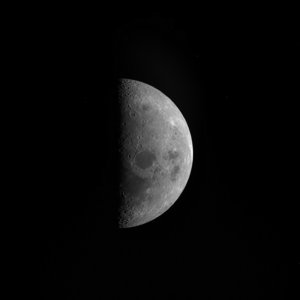Accept all cookies Accept only essential cookies See our Cookie Notice

About ESA
The European Space Agency (ESA) is Europe’s gateway to space. Its mission is to shape the development of Europe’s space capability and ensure that investment in space continues to deliver benefits to the citizens of Europe and the world.
Highlights
ESA - United space in Europe
This is ESA ESA facts Member States & Cooperating States Funding Director General Top management For Member State Delegations European vision European Space Policy ESA & EU Space Councils Responsibility & Sustainability Annual Report Calendar of meetings Corporate newsEstablishments & sites
ESA Headquarters ESA ESTEC ESA ESOC ESA ESRIN ESA EAC ESA ESAC Europe's Spaceport ESA ESEC ESA ECSAT Brussels Office Washington OfficeWorking with ESA
Business with ESA ESA Commercialisation Gateway Law at ESA Careers Cyber resilience at ESA IT at ESA Newsroom Partnerships Merchandising Licence Education Open Space Innovation Platform Integrity and Reporting Administrative Tribunal Health and SafetyMore about ESA
History ESA Historical Archives Exhibitions Publications Art & Culture ESA Merchandise Kids Diversity ESA Brand Centre ESA ChampionsLatest
Space in Member States
Find out more about space activities in our 23 Member States, and understand how ESA works together with their national agencies, institutions and organisations.
Science & Exploration
Exploring our Solar System and unlocking the secrets of the Universe
Go to topicAstronauts
Missions
Juice Euclid Webb Solar Orbiter BepiColombo Gaia ExoMars Cheops Exoplanet missions More missionsActivities
International Space Station Orion service module Gateway Concordia Caves & Pangaea BenefitsLatest
Space Safety
Protecting life and infrastructure on Earth and in orbit
Go to topicAsteroids
Asteroids and Planetary Defence Asteroid danger explained Flyeye telescope: asteroid detection Hera mission: asteroid deflection Near-Earth Object Coordination CentreSpace junk
About space debris Space debris by the numbers Space Environment Report In space refuelling, refurbishing and removingSafety from space
Clean Space ecodesign Zero Debris Technologies Space for Earth Supporting Sustainable DevelopmentLatest
Applications
Using space to benefit citizens and meet future challenges on Earth
Go to topicObserving the Earth
Observing the Earth Future EO Copernicus Meteorology Space for our climate Satellite missionsCommercialisation
ESA Commercialisation Gateway Open Space Innovation Platform Business Incubation ESA Space SolutionsLatest
Enabling & Support
Making space accessible and developing the technologies for the future
Go to topicBuilding missions
Space Engineering and Technology Test centre Laboratories Concurrent Design Facility Preparing for the future Shaping the Future Discovery and Preparation Advanced Concepts TeamSpace transportation
Space Transportation Ariane Vega Space Rider Future space transportation Boost! Europe's Spaceport Launches from Europe's Spaceport from 2012
Welcome home Rosetta
Thank you for liking
You have already liked this page, you can only like it once!
It is always reassuring to catch that first familiar glimpse of home after a great adventure, but for our space-faring satellites the return visit is brief and of a practical nature: to use the planet’s immense gravity to sling it onto a new trajectory.
These ‘gravity assists’ are fleeting encounters, but enough to change the spacecraft’s speed and direction such that it can eventually enter orbit around another world.
This delicate view of Earth was captured in 2007 on the second of three Earth flybys made by ESA’s comet-chasing Rosetta spacecraft on its ten year journey to Comet 67P/Churyumov-Gerasimenko. The spacecraft also got a boost from Mars to set it on course with its destination.
The first ever interplanetary gravity slingshot took place on 5 February 1974, when NASA’s Mariner 10 flew past Venus en route to flybys of Mercury. The ESA-JAXA BepiColombo mission – whose name is inherited from Giuseppe Colombo who originally proposed to NASA the interplanetary trajectories that would allow Mariner-10 multiple Mercury flybys by using gravity assists at Venus – will make nine flybys of Earth, Venus and Mercury to reach the innermost planet and eventually enter orbit about it.
Similarly, ESA’s upcoming Solar Orbiter mission will use Venus gravity assists to change its inclination to get a better look at the Sun’s poles. And ESA’s Jupiter Icy Moons Explorer will first dive into the inner Solar System to use Earth, Venus and Mars to set course for the gas giant Jupiter.
But Earth remains home to a fleet of satellites busy performing a number of different activities from orbit: while some are peering far away into the cosmos, our Earth Observation missions are watching diligently over our precious planet, taking its ‘pulse’ and helping us to better understand how to care for it. The Sun-illuminated crescent seen around Antarctica in this beautiful image certainly evokes a feeling of fragility and reminds us of our special place in space.
The image was taken by the OSIRIS camera on Rosetta about two hours before closest approach during the 13 November 2007 flyby, when the spacecraft was 75 000 km from Earth. The mission went on to become the first to rendezvous with and land on a comet, and the first to follow and study a comet on its orbit around the Sun.
-
CREDIT
ESA ©2005 MPS for OSIRIS Team MPS/UPD/LAM/IAA/RSSD/INTA/ UPM/DASP/IDA -
LICENCE
ESA Standard Licence

Earth limb seen by OSIRIS

OSIRIS’ view of Earth by night

Rosetta's last call home

Rosetta image of the Moon















 Germany
Germany
 Austria
Austria
 Belgium
Belgium
 Denmark
Denmark
 Spain
Spain
 Estonia
Estonia
 Finland
Finland
 France
France
 Greece
Greece
 Hungary
Hungary
 Ireland
Ireland
 Italy
Italy
 Luxembourg
Luxembourg
 Norway
Norway
 The Netherlands
The Netherlands
 Poland
Poland
 Portugal
Portugal
 Czechia
Czechia
 Romania
Romania
 United Kingdom
United Kingdom
 Slovenia
Slovenia
 Sweden
Sweden
 Switzerland
Switzerland
























